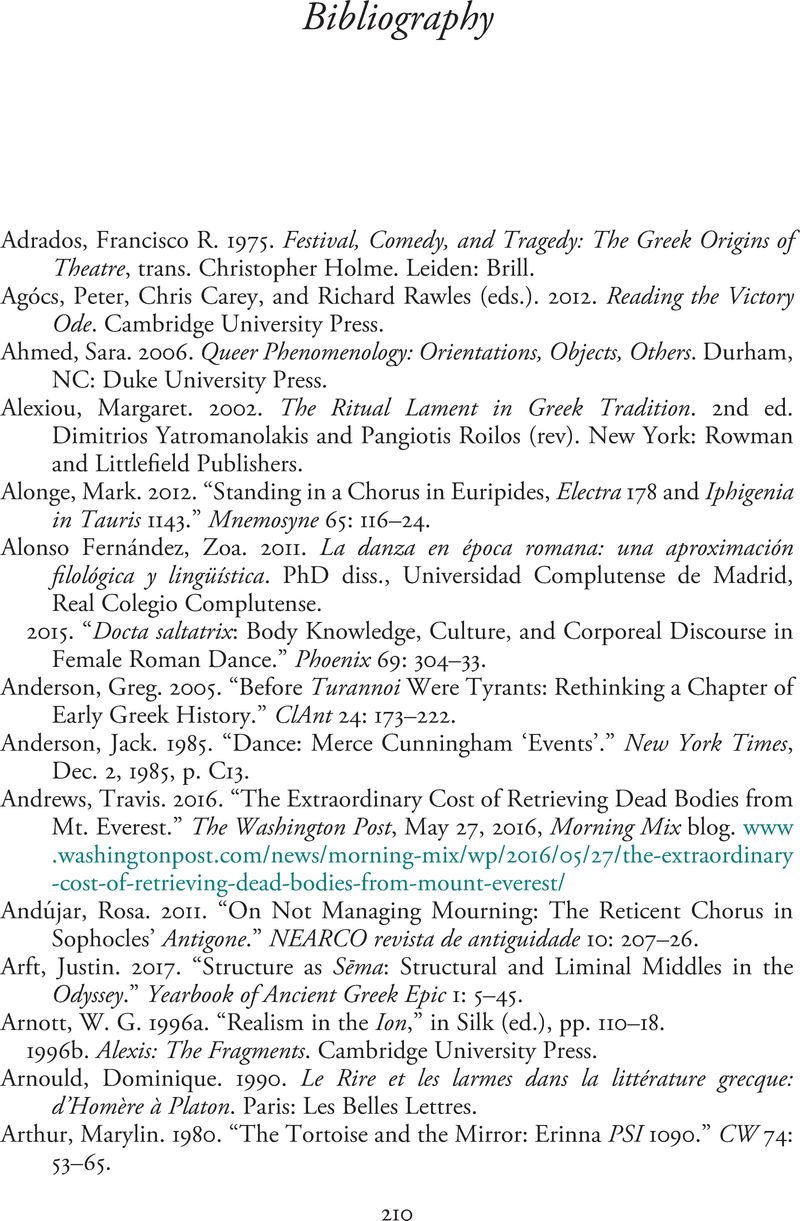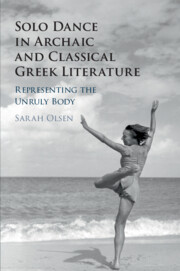Book contents
- Solo Dance in Archaic and Classical Greek Literature
- Solo Dance in Archaic and Classical Greek Literature
- Copyright page
- Dedication
- Contents
- Figures
- Acknowledgments
- Notes on Texts, Abbreviations, and Style
- Introduction
- Chapter 1 The Fantastic Phaeacians
- Chapter 2 Io’s Dance
- Chapter 3 Dance at Work
- Chapter 4 Dance and Dissonance
- Chapter 5 Staging Madwomen
- Chapter 6 Agency, Narrative, and the Dancing Girl
- Chapter 7 Dance History
- Conclusion
- Bibliography
- Index Locorum
- General Index
- References
Bibliography
Published online by Cambridge University Press: 30 November 2020
- Solo Dance in Archaic and Classical Greek Literature
- Solo Dance in Archaic and Classical Greek Literature
- Copyright page
- Dedication
- Contents
- Figures
- Acknowledgments
- Notes on Texts, Abbreviations, and Style
- Introduction
- Chapter 1 The Fantastic Phaeacians
- Chapter 2 Io’s Dance
- Chapter 3 Dance at Work
- Chapter 4 Dance and Dissonance
- Chapter 5 Staging Madwomen
- Chapter 6 Agency, Narrative, and the Dancing Girl
- Chapter 7 Dance History
- Conclusion
- Bibliography
- Index Locorum
- General Index
- References
Summary

- Type
- Chapter
- Information
- Solo Dance in Archaic and Classical Greek LiteratureRepresenting the Unruly Body, pp. 210 - 237Publisher: Cambridge University PressPrint publication year: 2020



